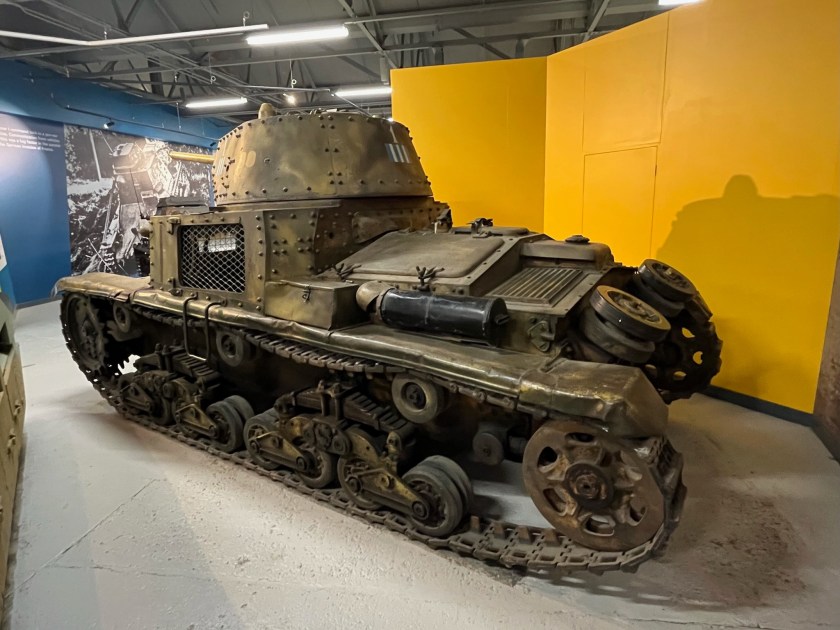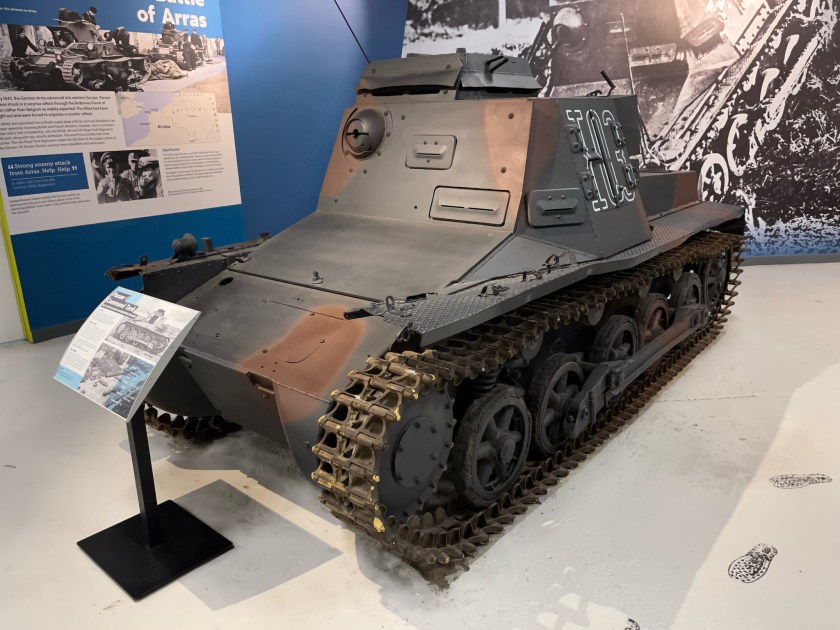This Home Guard Thornycroft Type 2 Bison was on display at Bovington.

The Bison was an extemporised armoured fighting vehicle frequently characterised as a mobile pillbox. Bisons were produced in Britain during the invasion crisis of 1940-1941. Based on a number of different lorry chassis, it featured a fighting compartment protected by a layer of concrete.
The Bison was not very mobile, and was only intended for use in static defence. However, it was relatively cheap and easy to produce, and could provide valuable protection for troops against enemy fire.

Bisons were used by the Royal Air Force (RAF) to protect aerodromes and by the Home Guard. They acquired the generic name “Bison” from their main manufacturer, Thornycroft.
It’s a good illustration of the desperate state of the defence of the United Kingsom in 1940. Take a lorry and add some concrete to turn it into an armoured vehicle. They were really no more than mobile pillboxes.

With a variety of chassis to work on, Bisons inevitably varied in detail, but were made in three distinct types:
Type 1 was the lightest. It had a fully armoured cab and a small armoured fighting compartment roofed with canvas.
Type 2 had an armoured cab roofed with canvas and a separate fully enclosed fighting compartment resembling a small pillbox on the back – communication between driver and crew must have been difficult.
Type 3 was the largest and heaviest. It had a contiguous cabin and fighting compartment completely enclosed in concrete armour.
Another photograph of the Home Guard Thornycroft Bison.
There are quite a few gaming ideas and scenarios that could use the Bison.
Operation Sealion
The year is 1940. The Germans are preparing to invade Britain. The Home Guard, a volunteer militia, is hastily being assembled to defend the country. One of the Home Guard’s most important tasks is to defend the airfields. These airfields are vital for the RAF to operate, and they are also the targets of German paratroopers and glider forces.
One airfield in particular, RAF Manston, is poorly defended. It is manned by a small detachment of RAF personnel and a few armed guards. The Germans know this, and they plan to capture the airfield in the opening hours of the invasion.
The Germans launch their attack on the night of September 7th. The paratroopers and glider forces drop onto the airfield, catching the defenders by surprise. The Germans quickly overwhelm the defenders and take control of the airfield.
The Home Guard is alerted to the invasion, and they begin to mobilize. They know that it is essential to retake RAF Manston, or the Germans will be able to use it to fly in reinforcements and supplies.
The Home Guard attacks the airfield the next day. They are met with stiff resistance from the Germans, who are well-entrenched in the concrete bunkers and pillboxes that surround the airfield. The fighting is fierce, and the Home Guard suffers heavy casualties.
However, the Home Guard eventually prevails. They storm the bunkers and pillboxes, and they drive the Germans from the airfield. The Home Guard has retaken RAF Manston, and the Germans have been denied a vital foothold in Britain.
The Home Guard’s victory at RAF Manston is a major turning point in the Battle of Britain. It shows that the British people are determined to defend their country, and it gives the RAF a much-needed boost in morale.
The Bison
One of the Home Guard units that fought at RAF Manston was equipped with a Home Guard Thornycroft Bison. The Bison was an improvised fighting vehicle frequently characterised as a mobile pillbox. It was based on a lorry chassis with a concrete fighting compartment on the back. The Bison was not very mobile, but it was heavily armored and could provide valuable protection for troops against enemy fire.
The Bison played a key role in the Home Guard’s victory at RAF Manston. It was used to transport troops and supplies to the front lines, and it provided valuable fire support during the fighting. The Bison’s armor proved to be a lifesaver for many Home Guard soldiers, and it helped to turn the tide of the battle.
The Bison’s victory at RAF Manston is a testament to the ingenuity and determination of the Home Guard. It shows that even improvised weapons and vehicles can be used to great effect when defending one’s homeland.



































